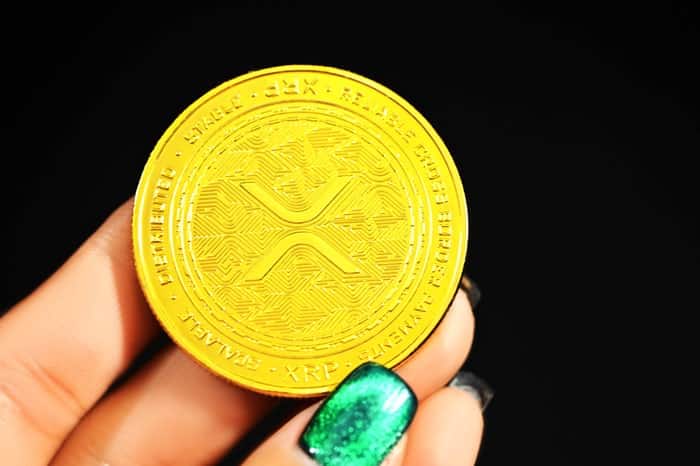Ever wondered about the origins and the core principles behind the XRP Ledger? Dive into a fascinating conversation with David Schwartz, a key architect of the XRPL and Ripple’s Chief Technology Officer (CTO), as he reflects on the journey and the inherent strengths of this groundbreaking technology. His insights, shared in an episode of Ripple’s web video series, “The Ripple Drop,” offer a unique glimpse into the evolution and the unwavering reliability of the XRP Ledger.
The Genesis of the XRP Ledger: A Vision Takes Shape
Imagine building a financial system from the ground up, one designed for speed and efficiency. That’s precisely what David Schwartz, along with Jed McCaleb and Arthur Britto, set out to do back in 2011 and 2012. The result? The XRP Ledger, with its native currency, XRP ($XRP). As David himself recounted:
“Well, I started working on what we now call the XRP Ledger at the end of 2011, so I’ve been at this for eight or nine years… but the changes have been drastic. I mean in the early days all we had was the ability to perform a transaction on a decentralized ledger in just a couple of seconds, and then we started to realize that the properties of the algorithms that we developed allowed us to do things like a decentralized exchange.”
He further elaborated on the early days:
“And then we had this idea of allowing people to issue assets and ideas like community credit, and we put all that together into a functional system probably in mid-2012.”
So, from a basic transaction ledger, the vision quickly expanded to encompass decentralized exchange capabilities and the issuance of various assets. This early ambition laid the foundation for the versatile platform we know today.
Why is Robustness So Critical for the XRP Ledger?
The conversation then shifted to a crucial aspect of the XRP Ledger: its robustness. Why is this such a big deal? Cate, the interviewer, aptly inquired about this, prompting David to explain the high stakes involved.
“You have to realize that you’re talking about billions of dollars in a system that doesn’t have an administrator… There’s nobody that you can go to if it messes up, and so reliability is the number one property, and it means that these systems are very slow to develop and evolve.”
Think about it: a system handling billions without a central authority to fix things if they go wrong. Reliability isn’t just a feature; it’s a necessity. This inherent requirement dictates a cautious and deliberate approach to development and updates.
The Pace of Innovation: Why Can’t Blockchains Move Faster?
The discussion naturally progressed to the speed of innovation within blockchain technology. Why don’t these systems adopt new features as quickly as traditional software?
David shed light on this with an insightful comparison to Bitcoin’s early days:
“In the early days, before I was working on the XRP Ledger and I was looking at Bitcoin, and we sort of had this idea that if there was any new feature, Bitcoin would just adopt it. We now know that’s hopelessly naïve because any change to a system like this imposes cost on everybody who uses the system. With any other piece of software, a company will release a new version of the software, say Oracle releases a new version, and they’ll say to people who have like mission-critical deployments ‘don’t upgrade to the new version, just use the current version, give us a little bit of time, test it whatever’.”
He emphasized the unique challenge of public blockchains:
“You can’t really do that on a public blockchain — if the rules change, people have to run software with the new rules… You want to ask why these systems don’t move more quickly, why they don’t add features on a regular basis, that’s why.”
Here’s a breakdown of the key reasons for the deliberate pace of blockchain evolution:
- Cost of Change: Every modification impacts all users of the network.
- No Optional Upgrades: Unlike traditional software, changes on a public blockchain require everyone to adopt the new rules.
- Focus on Stability: Given the high stakes and lack of a central authority, stability and reliability are paramount.
Key Takeaways from David Schwartz’s Insights
David Schwartz’s conversation provides valuable insights into the XRP Ledger and the broader blockchain landscape. Here are some key takeaways:
- Early Vision: The XRP Ledger was conceived with the ambition to create a fast and efficient decentralized system, evolving quickly to support decentralized exchange and asset issuance.
- Robustness is Paramount: The absence of a central administrator necessitates an unwavering focus on reliability and stability.
- Deliberate Evolution: The nature of public blockchains requires a cautious approach to upgrades, as changes impact the entire network.
Looking Ahead
While the interview excerpt doesn’t delve into the specifics of Ripple’s current interest in NFTs, as mentioned in the initial context, understanding the foundational principles and the deliberate development process of the XRP Ledger provides a crucial backdrop. The same principles of robustness and careful evolution likely guide their approach to new technologies like NFTs.
In Conclusion
David Schwartz’s reflections offer a compelling narrative of the XRP Ledger’s journey, highlighting the critical importance of robustness and the inherent challenges of evolving a decentralized system. His insights are invaluable for anyone seeking to understand the core principles driving blockchain technology and the specific strengths of the XRP Ledger. The journey from a basic transaction ledger to a platform capable of complex functionalities is a testament to the vision and dedication of its creators, and the emphasis on reliability ensures its continued relevance in the ever-evolving world of digital finance.
Disclaimer: The information provided is not trading advice, Bitcoinworld.co.in holds no liability for any investments made based on the information provided on this page. We strongly recommend independent research and/or consultation with a qualified professional before making any investment decisions.


